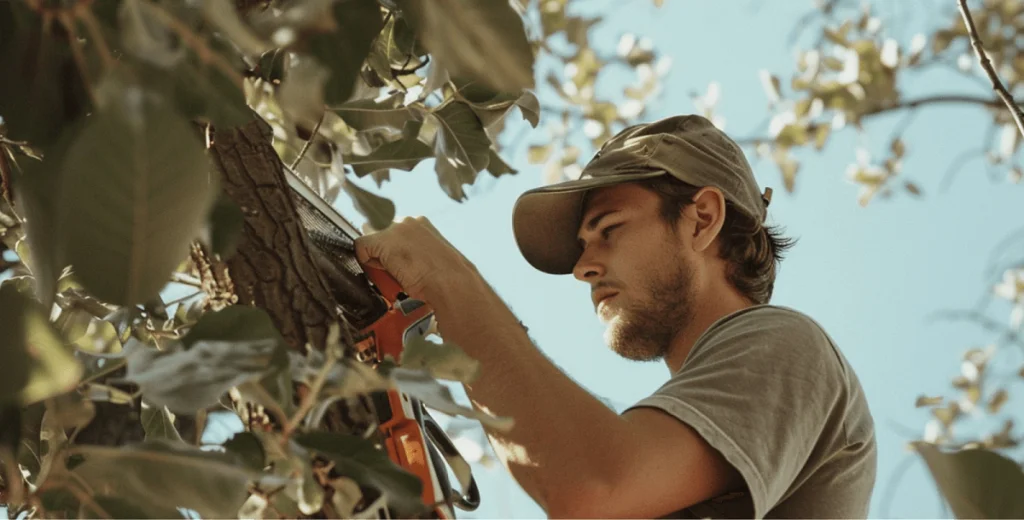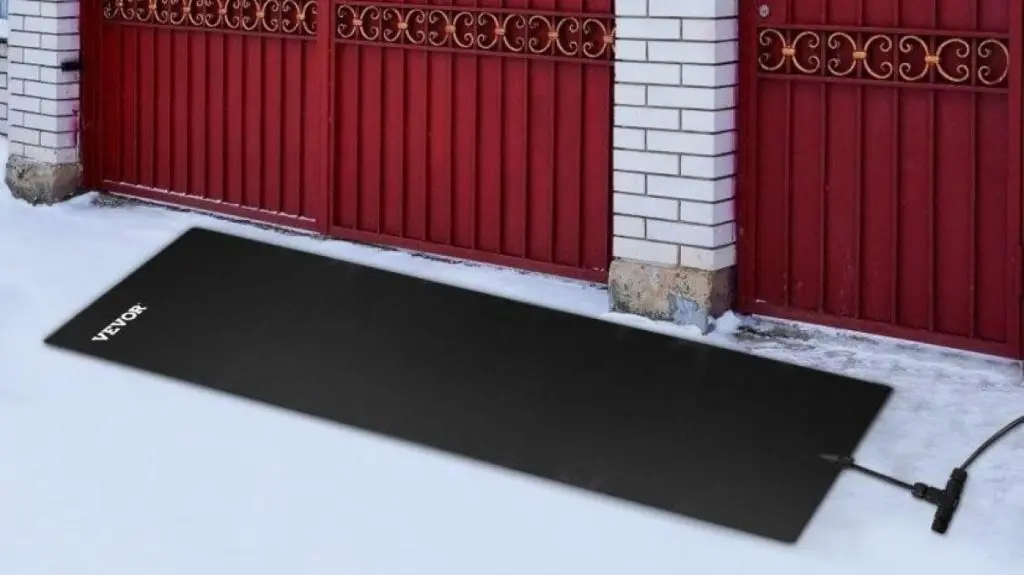Have you got some majestic oak trees you want to keep around for as long as possible? Tree pruning isn’t just for show – it’s like a health check-up for your oaks. It’s like helping them grow strong and stay fit, warding off pesky diseases, and keeping them from crashing into your living room during the next big storm.
Here is a thing to remember: The VEVOR tree pruner is a champ at precision cuts and doesn’t make arms feel like jelly afterward.
Pruning time isn’t a wild guess, though – there’s a method to the madness.
This is a down-to-earth guide on when to break out your pruner and give those oaks some tender, loving care.
Table of contents
Understanding Oak Tree Pruning
The Significance of Pruning Oak Trees
Why bother pruning? Well, imagine if you never trimmed your nails or hair. Things get out of control. It is the same with oak trees. Pruning keeps them looking good and, more importantly, living well. It’s all about snipping away the parts that no longer serve them—like dead or weak branches that could cause trouble if they fell. Plus, it opens up their leafy canopy to a breezy airflow, and oh boy, does it help them flaunt their best green look in the neighborhood by encouraging fresh, new branches to grow.
Identifying the Best Time for Pruning
When it comes to trimming your oak tree, timing is everything. Imagine getting a haircut before running a marathon—not fun, right? Trees feel the same when they get pruned.
- Here’s the deal: Late winter to early spring is when your oak catches those last few Zs before waking up in full bloom. That’s the sweet spot for pruning. The tree is more or less dormant, so cutting back branches doesn’t stress it out. And the chilly weather? It’s your ally here, keeping pesky diseases at bay, like that no-good oak wilt that can wreak havoc if it gets a chance.
Caring for an oak tree is a big deal; it’s not just a “whenever-you-feel-like-it” task. If you get the timing right, you’ll set up your stoic green giant for a season of growth, health, and maybe even a squirrel party.
When Should You Trim Oak Trees?

Grab a cup of coffee and sit back because we’re discussing the best season to get those oak trees in shape—late winter to early spring. Yep! That’s when your oak trees are having a big snooze (that’s dormancy for the tree-savvy folks), so they won’t mind a little haircut. There’s less sap running through their branches, which means fewer chances for your tree buddies to catch a cold (aka diseases).
Seasonal Guidance for Oak Tree Pruning
If you want your oak tree to thrive throughout the year, it’s important to prune them at the right time.
- Ideal Pruning Time: Late winter through early spring is your golden window.
- Why This Timeframe? Less sap flow = happy, stress-free trees.
Now, before you start pruning willy-nilly, there’s something else you should know.
The Impact of Tree Age and Health on Pruning
Your tree’s age and health are like the oak’s personal history—it tells you how much it can handle. The young ones, the oak equivalent of enthusiastic teenagers, are chill and can handle significant snipping. But the granddaddies of oaks, or those that have seen better days, need more TLC. You do not want to stress them out, so gentle cuts!
- For young, vigor-filled oaks: Go ahead; they can handle heavier pruning.
- For the old-timers or not-so-fit oaks: Easy does it. Gentle prunings encourage healing.
Remember, every tree has its personality, so take a moment to understand what your oak needs. If you need more clarification, there’s no harm in asking a tree-care guru for advice.
How to Prune Oak Trees Effectively
Sometimes, the beauty of your garden is mirrored in the health of its trees, and giving oak trees a little trim here and there can go a long way. We’ll talk about everything from the ‘oh-so-essential’ tools to how you should play the part of a tree’s hairstylist. Please keep it safe and bright; your oaks will thank you with their lush branches.
Tools and Techniques for Safe Pruning
Good tools are like best friends—they make life much easier. To chop back those oaks without causing a fuss, get a VEVOR tree pruner. It will make the job as smooth as butter, with clean cuts that help your tree heal faster.
Step-by-Step Guide to Pruning Oak Trees
Now, don’t just go snipping away. Pause and take a good look at your tree. Is it looking strong and ready for a haircut? Good. Here’s how to give it a proper pruning:
- Start by checking out the tree’s health. Are there any limbs looking a little worse for wear?
- Put on your thinking cap and decide on the branches that must go. Less is more; you only want to give it a buzz cut if you have to.
- Once you have a game plan, snip those branches with precision. Consider it surgery—you want those cuts as neat as possible to avoid stressing the tree.
Do it thoughtfully, and you’ll cultivate a tall, sturdy tree for years.
Maximizing the Use of VEVOR Tree Pruner
Have you got your hands on the VEVOR Tree Pruner yet? It’s a real game-changer for anyone with trees that need a tidy-up. This thing has a reach that lets you trim without needing to teeter on a ladder, and the blade is so sharp that it slices through branches like butter. You’ll keep your feet safely on the ground and get precise cuts that make your trees look professionally groomed.

Features and Benefits of VEVOR Tree Pruner
- Safety First: You’re not up in the air when you’re pruning, meaning fewer “whoops” moments.
- Sharp Shooter: The blade is ultra-sharp for clean, crisp cuts.
- Long Arm of the Lawn: The extended reach means high branches, no problem.
Practical Tips for Using VEVOR Tree Pruner
- Keep it Sharp: Dull blades are a no-go. Keep yours sharper than your wits to breeze through branches.
- Flexibility is Key: Tilt that blade to get the perfect angle for every snip-snap.
- Safety Isn’t Just a Suggestion: Gear up with gloves and goggles, and know your safe-cutting techniques.
Get the most out of your VEVOR tree pruner by keeping these pointers in mind, and turn your garden into the envy of the neighborhood. It’s not just about how powerful a tool is; it’s also about the love and care you put into using it!
Common Pruning Mistakes to Avoid
When giving your plants a haircut, it’s easy to get snip-happy. But hold up—that eager trim could do more harm than good. Here’s the lowdown on what not to do next time you pick up those pruning shears.
Timing is Everything
Just like you wouldn’t want someone waking you up in a deep sleep to get a haircut, plants also have a terrible time for a trim. Avoid chopping away during late fall or when the plant is budding, as pruning at the wrong time can result in fewer flowers or fruits.
A Clean Cut
Are those jagged edges left after a nasty cut? They’re not just unsightly—they can be unhealthy for your plants, opening the door to pests and diseases. Ensure the blades on your pruning tools are sharp and clean for a smooth cut to keep your plants happy.
Keep It Balanced
Going overboard by stripping away too much foliage is like taking layers off on a chilly day—it leaves your plants vulnerable. Aim to remove just enough to tidy up and encourage growth without going full buzzcut.
Suit Up
Remember to gear up for the occasion; those thorns and branches don’t play nice. Slap on some gloves, wear long sleeves and protect your peepers with safety glasses.
Pruning is an art, just like baking a cake or writing a song. Take your time and get to know your plants’ quirks, and you’ll soon have a garden that looks both loved and lived-in.
Additional Considerations and Tips
Much like us, trees can run into rough patches, be it from diseases or damage. Just think of a tree as a buddy needing help to bounce back. Before you roll up your sleeves and get to work, it might be wise to shout at someone who knows their way around trees—an arborist.
Dealing with Diseased or Damaged Trees
- Do you have trees that seem slightly under the weather or have had a rough go? Don’t wait too long; trees can’t speak up when hurting. Get an expert’s eyes on them. Find a good arborist who’ll make the right call—whether it’s a minor fix or something more significant.
The Role of Professional Arborists
Sometimes, you take matters into your own hands. You may have got that trusty saw in the shed and watched a few videos. But here’s the thing—not all tree problems are DIY-friendly. If a big old tree needs attention or some trickier issues at play, leave it to the pros. Arborists aren’t just tree cutters; they’re like tree doctors with climbing gear. They’ve got the know-how for those complex tasks that might stump the rest of us. They do it safely—a win-win for everyone, especially the tree.
Last Words
Timing plays a crucial role in trimming your cherished oak trees! Invest in a reliable VEVOR tree pruner to ensure you do it right. This tool will make the job easier and more efficient. Additionally, familiarize yourself with some trusted pruning methods. Doing so will help you maintain the health and appearance of your oaks and ensure they continue to thrive for years to come. Remember, a little snip here and there is more than just about keeping your garden tidy; it’s about giving your trees the love and care they deserve. So, take the time to learn about the best pruning practices and watch your oaks flourish.





